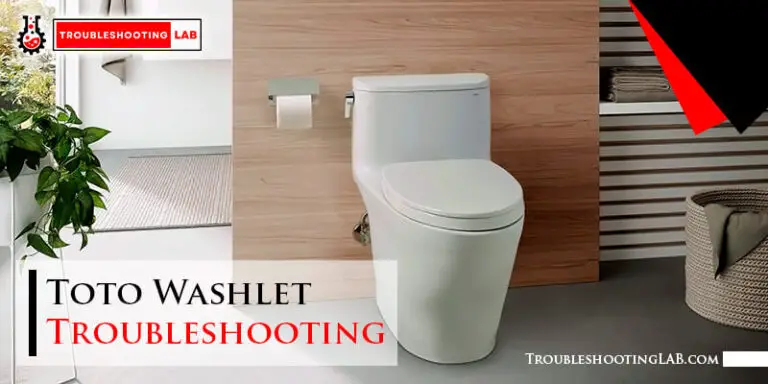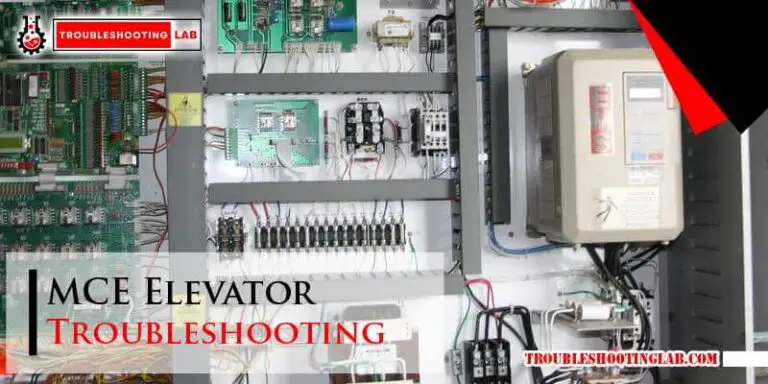Fill-Rite Pump Troubleshooting: Easy Fixes for Pump Malfunctions
If your Fill-Rite pump is not working, it could be due to a blocked bypass caused by debris or a broken component. To troubleshoot, check if there is a strainer or filter fitted to the pump and ensure it is clear of debris.
Additionally, inspect the strainer seal for any damage. If the issue persists, you can contact the knowledgeable Fill-Rite Technical Support team for assistance in troubleshooting and repairing your Fill-Rite equipment. Download the instruction manuals for your Fill-Rite products to obtain detailed information on installation, operation, maintenance, and troubleshooting.
Common Causes Of Pump Malfunctions
Debris Blocking The Bypass
One of the common causes of pump malfunctions is when the bypass on the transfer pump gets blocked with debris. This can prevent the pump from functioning properly and lead to issues with fuel transfer. When debris accumulates in the fuel and there is no strainer or filter fitted to the pump, it can easily enter the bypass and cause blockages.
To troubleshoot this problem, it is important to check if there is a strainer or filter present. If there is, make sure it is clear of any debris and clean it thoroughly. Inspecting the strainer seal is also crucial, as any damage or clogging can affect the pump’s performance. Removing any debris from the strainer seal and ensuring a tight seal can help resolve this issue.
Broken Bypass Mechanism
A broken bypass mechanism can also lead to pump malfunctions. This can occur due to wear and tear over time or as a result of excessive force being applied to the mechanism. When the bypass mechanism is broken, it may fail to properly regulate the flow of fuel and cause issues with pump operation.
To address this problem, it is necessary to inspect the bypass mechanism for any visible signs of damage or misalignment. If there are any broken parts or components, they should be replaced immediately. Ensuring that the new bypass mechanism is properly installed and functioning correctly can help resolve this issue.
Lack Of Strainer Or Filter
Another common cause of pump malfunctions is the lack of a strainer or filter fitted to the pump. Without a strainer or filter, debris can easily enter the pump and cause blockages. This can disrupt the flow of fuel and affect the pump’s performance.
To troubleshoot this issue, it is important to check if the pump has a strainer or filter installed. If it doesn’t, consider fitting one to prevent debris from entering the pump. Regularly cleaning and maintaining the strainer or filter can help prevent blockages and ensure smooth pump operation.
Clogged Strainer Seal
A clogged strainer seal can also contribute to pump malfunctions. When the strainer seal becomes clogged with debris, it can prevent proper fuel flow and cause issues with pump performance. This can lead to reduced pump efficiency and even complete pump failure.
To address this problem, inspect the strainer seal for any signs of clogging or damage. Clean the seal thoroughly, removing any debris and ensuring a tight seal. Regularly maintaining and cleaning the strainer seal can help prevent clogs and ensure optimal pump operation.
In conclusion, addressing these common causes of pump malfunctions, such as debris blocking the bypass, a broken bypass mechanism, a lack of a strainer or filter, and a clogged strainer seal can help resolve issues with pump performance. Regular maintenance, cleaning, and inspection are crucial to ensure smooth pump operation and prevent potential problems.
Fill-Rite Pump Troubleshooting Steps For Pump Malfunctions
If you’re experiencing issues with your Fill-Rite pump, it’s important to go through a series of troubleshooting steps to identify and address the problem. By following these steps, you can avoid costly repairs and get your pump back up and running quickly.
Inspect And Clean The Bypass For Debris
Start by checking the bypass for any debris that may be blocking the flow of fuel. Debris can accumulate over time, causing the pump to malfunction. To clean the bypass, follow these steps:
- Turn off the pump and disconnect it from the power source.
- Remove the cover of the bypass housing.
- Inspect the bypass for any debris.
- If you find any debris, use a brush or compressed air to clean it out.
- Replace the cover of the bypass housing.
Check For Any Broken Bypass Components
Next, check for any broken bypass components that may be causing the pump malfunction. To do this, follow these steps:
- Turn off the pump and disconnect it from the power source.
- Inspect the bypass components for any signs of damage.
- If you find any broken components, replace them with new ones.
- Make sure all components are properly installed and secure.
Install A Strainer Or Filter If Not Already Present
If your pump does not have a strainer or filter, it may be more susceptible to debris buildup and malfunctions. Installing a strainer or filter can help prevent this issue. Here’s how:
- Turn off the pump and disconnect it from the power source.
- Locate the intake port of the pump.
- Install a strainer or filter on the intake port.
- Make sure the strainer or filter is securely attached.
Clean And Inspect The Strainer Seal
The strainer seal plays a crucial role in preventing leaks and maintaining the efficiency of the pump. Regular cleaning and inspection of the strainer seal is essential. Follow these steps:
- Turn off the pump and disconnect it from the power source.
- Remove the strainer or filter from the intake port.
- Clean the strainer seal with a clean cloth or brush.
- Inspect the strainer seal for any signs of damage or wear.
- If necessary, replace the strainer seal with a new one.
- Reinstall the strainer or filter onto the intake port.
By following these troubleshooting steps, you can address common pump malfunctions and ensure the smooth operation of your Fill-Rite pump. If you are unable to resolve the issue on your own, it is recommended to contact the Fill-Rite technical support team for further assistance.
Steps to Prime a Fuel Transfer Pump
Priming a fuel transfer pump is an essential step to ensure that it works efficiently and effectively. Without proper priming, the pump may fail to draw fuel and will not function as desired. In this section, we will walk you through the steps to prime a fuel transfer pump, so you can easily resolve any issues you may encounter with your Fill-Rite pump.
Step 1: Squeeze the handle and wait for the hose to start filling up
The first step to priming a fuel transfer pump is to squeeze the handle and patiently wait for the hose to start filling up. This may take a minute or more, so exercise patience. As you squeeze the handle, you will be able to feel the hose filling up with fuel, ensuring that the pump is drawing fuel from the source.
Step 2: Continue squeezing until the fuel flows out the end of the hose
Once you feel the hose starting to fill up, continue squeezing the handle until the fuel flows out of the end of the hose. This step is crucial to ensure that the pump is adequately primed and ready for use. By allowing a continuous flow of fuel through the hose, you can ensure that any air pockets are eliminated, allowing the pump to work efficiently.
By following these simple steps, you can successfully prime your Fill-Rite pump and resolve any issues you may be experiencing. Remember to exercise patience and continue squeezing the handle until fuel flows out of the end of the hose. This will ensure that your fuel transfer pump functions as desired and provides a reliable fuel transfer solution.
AMP Usage Of Fill-rite Pump
Find The Technical Details Of Amp Usage For Fill-rite Pumps
If you’re experiencing issues with your Fill-Rite pump and suspect it may be related to its amp usage, it’s important to have a clear understanding of the technical specifications. Fill-Rite pumps are known for their reliable performance and efficiency, and understanding their amp usage can help in troubleshooting any problems that may arise.
The amp usage of Fill-Rite pumps can vary depending on the specific model and its power requirements. To find the technical details of amp usage for your Fill-Rite pump, you can refer to the product’s instruction manual or visit the Fill-Rite website for more information.
It’s crucial to ensure that you have the correct power supply to match the amp requirements of your Fill-Rite pump. Insufficient power supply can result in the pump not functioning optimally or not working at all. Similarly, excessive power supply can overload the pump and lead to damage.
To avoid any issues with amp usage, make sure to review the technical specifications of your Fill-Rite pump and ensure it is compatible with the power supply available. Taking this step can help prevent unnecessary troubleshooting and potentially save you time and money.
Contact Fill-rite Technical Support For Troubleshooting And Repairing Assistance
If you have followed the technical specifications and are still experiencing difficulties with your Fill-Rite pump, it may be time to seek professional assistance. Fill-Rite offers reliable technical support to help troubleshoot and repair any issues you may be facing.
Contacting Fill-Rite technical support can provide you with expert guidance on resolving the problem. Their knowledgeable team has a deep understanding of Fill-Rite pumps and can assist you in identifying the cause of the issue and finding a suitable solution.
When reaching out to Fill-Rite technical support, it’s helpful to provide them with specific details about your pump, such as the model number and any error messages or symptoms you have observed. This information will help them diagnose the problem more accurately and provide you with appropriate troubleshooting steps or repair recommendations.
Fill-Rite takes pride in supporting its customers and ensuring their equipment operates efficiently. Whether you need assistance with pump maintenance, repairs, or troubleshooting, their technical support team is available to help you get your Fill-Rite pump back in working order.
Remember, when facing pump issues, understanding the amp usage of Fill-Rite pumps and seeking expert assistance from Fill-Rite technical support can be key to resolving any problems and ensuring optimal performance.
Other Possible Reasons For Pump Malfunction
Refer To Fill-rite’s Troubleshooting Guide For Further Assistance
If you have tried the troubleshooting steps mentioned earlier and your Fill-Rite pump is still malfunctioning, there could be other factors causing the issue. It’s important to consider these possibilities and take appropriate action to resolve the problem. Here are some other possible reasons for your pump’s malfunction:
- Debris or blockage: The bypass on the transfer pump may be blocked with debris or possibly broken. This can be caused by particles within the fuel. Check if there is a strainer or filter fitted to the pump and ensure it is clear. Clean and remove any debris as necessary and inspect the strainer seal.
- Primed incorrectly: If your pump is not primed properly, it may not be able to function correctly. Refer to the manufacturer’s instructions or consult their website for guidance on how to prime your Fill-Rite pump correctly.
- Low voltage or electrical issues: Ensure that your pump is receiving the appropriate voltage. If the voltage is too low or if there are any electrical issues, it can affect the pump’s performance. Check the power source, wiring, and connections to ensure everything is in proper working condition.
- Mechanical failure: In some cases, there may be a mechanical failure within the pump itself. This could be due to worn-out components, damaged seals, or other internal issues. If you suspect a mechanical failure, it may be necessary to seek professional help for repair or replacement.
Remember, troubleshooting can be a complex process and it’s always best to consult Fill-Rite’s official troubleshooting guide for accurate and specific guidance based on your pump model. Their guide will provide step-by-step instructions to help you diagnose and resolve issues effectively.
Consider Seeking Professional Help If The Issue Persists
If you have followed all the troubleshooting steps and the problem persists, it’s important to consider seeking professional help. Pump malfunctions can sometimes be complex and require specialized knowledge for proper diagnosis and repair.
Professional technicians have experience and expertise in dealing with pump issues, ensuring that the problem is addressed correctly. They can pinpoint the root cause of the malfunction and provide effective solutions to get your Fill-Rite pump back in working order.
Contact Fill-Rite’s technical support team or reach out to a qualified pump repair service in your area. They will be able to guide you further and provide the necessary assistance to resolve the issue.
In conclusion, while troubleshooting can help identify and resolve common pump issues, there may be other factors causing the malfunction. By referring to Fill-Rite’s troubleshooting guide and considering professional help if necessary, you can ensure that your pump is functioning optimally and continue with your fuel transfer operations smoothly.
Frequently Asked Questions
Why Is My Fuel Transfer Pump Not Working?
Possible causes for a fuel transfer pump not working include a blocked or broken bypass, debris in the fuel, and a clogged strainer or filter. Check for obstructions, clean the strainer, and inspect for any damage.
How Do You Prime A Fuel Transfer Pump?
To prime a fuel transfer pump, squeeze the handle and wait for fuel to fill up the hose. Make sure there is no debris blocking the bypass or strainer. If necessary, clean and remove debris from the strainer.
Why Is My Diesel Pump Running Slow?
The diesel pump may be running slow due to a blocked bypass or debris in the fuel. Check if there is a strainer or filter fitted and ensure that it is clear of debris. Examine the strainer seal and clean it if necessary. This is a common reason for a slow-running pump.
How Many Amps Does A Fill Rite Pump Use?
A Fill-Rite pump typically uses around X amps. For more technical support and troubleshooting, contact the Fill-Rite support team.
Why Is My Fill-rite Pump Not Priming?
Debris in the fuel or a blocked or broken bypass can cause the fill-rite pump to not prime properly. Ensure the strainer is clean and remove any debris.
Conclusion
Troubleshooting a Fill-Rite pump can be a simple task if you follow the right steps. From checking for debris or blockages in the bypass or strainer to inspecting seals and ensuring proper priming, several factors can affect the pump’s functionality.
By referring to the manual, seeking technical support, and performing regular maintenance, you can keep your Fill-Rite pump running smoothly and efficiently. Remember to address any issues promptly to avoid costly repairs in the future.






I have a 15 gal/min fill rite pump on my gas tank on the farm. When I turn it on it immediately shuts off. It is only 3 or 4 years old. My diesel tank pumps work fine and are connected to the same electrical source. Do you know what might be the problem? Thanks
Hi there,
It sounds like you’re experiencing an issue with your Fill-Rite pump shutting off immediately after turning it on. Here are a few steps you can follow to troubleshoot:
If the issue persists after these steps, you might want to prime the pump as well. Follow the priming steps in our troubleshooting guide:
If the problem continues, you might want to contact Fill-Rite technical support for further assistance.